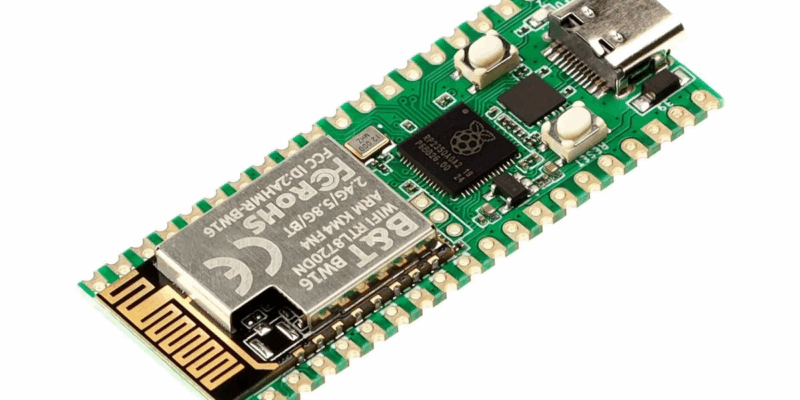WD PiDrive Node Zero review
By Russell Barnes. Posted

A custom low-energy hard drive coupled with a Pi Zero
Advertisement
Christmas is coming – keep Santa on the right track with our Raspberry Pi gift guide!
The WD PiDrive Node Zero is a clever all-in-one unit that combines a 314GB WD PiDrive with a Raspberry Pi Zero board.
The PiDrive is WD’s low-energy hard drive, designed specifically for the Raspberry Pi. It replaces the regular SATA III port with a micro-USB connection.
What we have here is a PiDrive in a plastic caddy with a mounted Pi Zero board. The PiDrive Node Zero caddy provides two additional full-sized USB ports, making it easier to hook up a keyboard without requiring a mini-USB adapter, but you still need a mini-HDMI to HDMI adapter.
The PiDrive is a custom-engineered WD hard drive that is more power efficient than a standard storage drive.
Included is a 4GB micro SD card preloaded with a custom version of NOOBS. When you first power on the PiDrive Node Zero, you install Raspbian onto the primary hard drive. The SD card boots the device, but you run it from the hard drive (so you don’t need to juggle the two drives).
You can perhaps think of it as a super-smart hard drive with built-in computing functionality, or you could regard it as a Pi Zero with super-sized storage space. Either way, it’s an intriguing all-in-one unit that gets you thinking about usage.
WD suggests that it’s “ideal for video recording, data logging, offline analytics, and applications where stand-alone operations are needed because of network limitations or privacy/security restrictions.”
There’s some merit to all of these applications, but getting the PiDrive Node Zero on to a network opens up a much broader range of potential uses.
Benchmarking the WD PiDrive Node Zero

The WD PiDrive Node isn’t as fast as WD’s USB flash drive offering (see ‘Related’). We did a buffered test with the hdparm tool: hdparm -t /dev/sda. We ran the test three times and got an average of 28.15 MB/sec.
Next, we ran a timed cached test using hdparm -T /dev/sda. Our average speed was 245.37 MB/sec. Neither speed will set the world alight, but we’re not sure this is problematic. Most of our imagined uses for the drive are as nodes on a system, set up to perform a task and tick away at it.
Networking with the PiDrive Node Zero
The Pi Zero lacks built-in wireless networking, unlike the newer Pi Zero W.
You have a few options for taking a PiDrive Node Zero online. Add a USB-to-Ethernet adapter for hook-up to a wired network, or use a USB wireless networking dongle for access to WiFi.
It is physically possible to remove the Pi Zero from the caddy (using a Torx screwdriver) and slot in a Pi Zero W. You’ll need to download the latest version of the PiDrive Foundation software (currently in beta) from the WD Labs website.
Once on a network, the Node Zero is ideal for DIY projects like a mini-DLNA and Samba file server, mobile backup device, a media device, or music box. There are reports of folks using it to create Bitcoin nodes.
In fact, it’s ideal for any task that requires a little processing power, with minimal energy draw and a decent amount of storage. There’s nothing here that you couldn’t hack together with Pi Zero, a few adapters and an external hard drive, but the self-contained unit makes it ideal for setting up and tucking it away in your house somewhere. WD also sells a Node Zero Enclosure for £8 that turns it into a neater unit.
Last word
4/5
A neat, all-in-one unit that combines Pi Zero computing with hard drive storage. We'd rather it packed the newer Pi Zero W, but it remains a charming and handy piece of kit.

Russell runs Raspberry Pi Press, which includes The MagPi, Hello World, HackSpace magazine, and book projects. He’s a massive sci-fi bore.
Subscribe to Raspberry Pi Official Magazine
Save up to 37% off the cover price and get a FREE Raspberry Pi Pico 2 W with a subscription to Raspberry Pi Official Magazine.
More articles
Win one of three DreamHAT+ radars!
That’s right, an actual working radar for your Raspberry Pi. We reviewed it a few months ago and have since been amazed at some of the projects that have used it, like last month’s motion sensor from the movie Aliens. Sound good? Well we have a few to give away, and you can enter below. […]
Read more →

RP2350 Pico W5 review
It’s Raspberry Pi Pico 2, but with a lot more memory
Read more →
Project Gigapixel
With a medium format 6×7 lens, this camera could theoretically be capable of producing a 3.3 gigapixel image
Read more →
